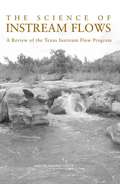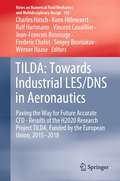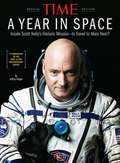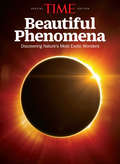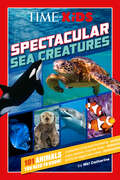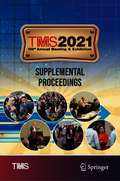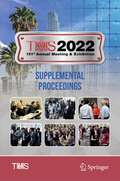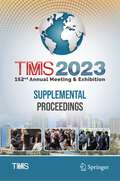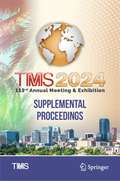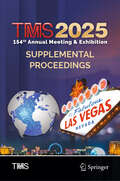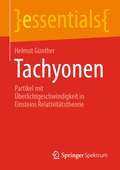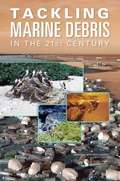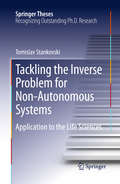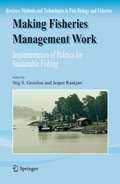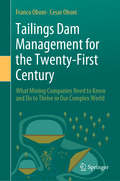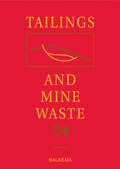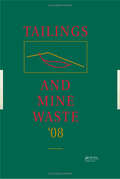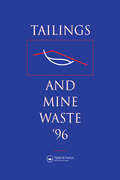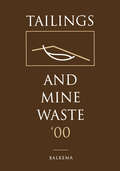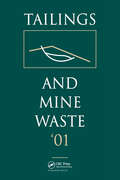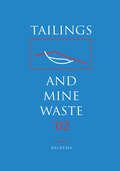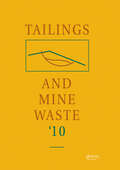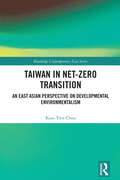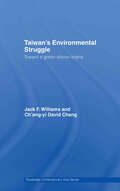- Table View
- List View
THE SCIENCE OF INSTREAM FLOWS: A Review of the Texas Instream Flow Program
by National Research Council of the National AcademiesAcross the United States, municipalities, counties, and states grapple with issues of ensuring adequate amounts of water in times of high demand and low supply. Instream flow programs aim to balance ecosystem requirements and human uses of water, and try to determine how much water should be in rivers. With its range of river and ecosystem conditions, growing population, and high demands on water, Texas is representative of instream flow challenges across the United States, and its instream flow program may be a model for other jurisdictions. Three state agencies—the Texas Water Development Board (TWDB), the Texas Parks and Wildlife Department (TPWD), and the Texas Commission on Environmental Quality (TCEQ)—asked a committee of the National Research Council (NRC) to review the Programmatic Work Plan (PWP) and Technical Overview Document (TOD) that outline the state’s instream flow initiative. The committee suggested several changes to the proposed plan, such as establishing clearer goals, modifying the flow chart that outlines the necessary steps for conducting an instream flow study, and provide better linkages between individual studies of biology, hydrology and hydraulics, physical processes, and water quality.
TILDA: Paving the Way for Future Accurate CFD - Results of the H2020 Research Project TILDA, Funded by the European Union, 2015 -2018 (Notes on Numerical Fluid Mechanics and Multidisciplinary Design #148)
by Charles Hirsch Werner Haase Vincent Couaillier Koen Hillewaert Ralf Hartmann Jean-Francois Boussuge Frederic Chalot Sergey BosniakovThis book offers detailed insights into new methods for high-fidelity CFD, and their industrially relevant applications in aeronautics. It reports on the H2020 TILDA project, funded by the European Union in 2015-2018. The respective chapters demonstrate the potential of high-order methods for enabling more accurate predictions of non-linear, unsteady flows, ensuring enhanced reliability in CFD predictions. The book highlights industrially relevant findings and representative test cases on the development of high-order methods for unsteady turbulence simulations on unstructured grids; on the development of the LES/DNS methodology by means of multilevel, adaptive, fractal and similar approaches for applications on unstructured grids; and on leveraging existent large-scale HPC networks to facilitate the industrial applications of LES/DNS in daily practice. Furthermore, the book discusses multidisciplinary applications of high-order methods in the area of aero-acoustics. All in all, it offers timely insights into the application and performance of high-order methods for CFD, and an extensive reference guide for researchers, graduate students, and industrial engineers whose work involves CFD and turbulence modeling.
TIME A Year in Space: Inside Scott Kellys Historic Mission Is Travel to Mars Next?
by Jeffrey Kluger The Editors of TIMEGo inside one of the most historic space missions ever in A YEAR IN SPACE, the new special edition from TIME, written by Apollo 13 author Jeffrey Kluger. A YEAR IN SPACE chronicles astronaut Scott Kelly's 340 days aboard the International Space Station (ISS) as part of NASA's exploration of the challenges of extended spaceflight. The most pressing question: Could humans endure the two-and-a-half-year trip to Mars and back?While science has some understanding of how space and zero gravity affect the human body, Scott and his twin brother, Mark, a retired astronaut who remained on Earth, have served as the perfect test and control subjects to explore these effects.This special edition, the companion piece to the TIME and PBS documentary series A Year in Space, provides exclusive coverage coupled with abundant photographs, many taken by Scott Kelly himself.Highlights include:An inside look at how Kelly conducted experiments aboard the ISS and how he spent his downtime.Landscape Mode: Breathtaking photographs taken by Scott Kelly from 250 miles above the Earth's surface.In interview with Samantha Cristoforetti, the first woman to spend 200 days in space, who spoke with TIME about her journey.
TIME Beautiful Phenomena: Discovering Nature's Most Exotic Wonders
by The Editors of TIME MagazineYour guide to the science of eclipses, rainbows, volcanoes, and nature's many wonders.Powerful and dramatic, the natural wonders of our earth dazzled our ancient ancestors-and continue to inspire awe in us today. Now, the Editors of TIME capture these amazing sights and occurrences in an all-new special edition, Beautiful Phenomena, pairing glowing photographs with clear, authoritative text that explains the how, what, why, and when of nature's wonders, including eclipses, rainbows, lightning, supermoons, auroras and so much more. Learn about the scientific breakthroughs that came from observing solar eclipses and other natural phenomena over the centuries . . . and discover the latest theories about them that are emerging today. In space, in the oceans, on the land, these natural wonders hold the keys to our understanding of the world around us. Unlock their mysteries with TIME Beautiful Phenomena.
TIME for Kids: 101 Animals You Need to Know! (TIME for Kids)
by Niki CatherineLearn about sharks, whales, dolphins, jellyfish, sea turtles, and more in this exciting book that features 101 sea creatures!This book is packed with exciting information about 100 of the ocean's most interesting creatures! Get to know seahorses, sea otters, penguins, seals, crabs, sharks, octopuses, whales, dolphins, manatees, and even narwhals in this wonderful book for ocean and animal lovers of all ages.
TMS 2021 150th Annual Meeting & Exhibition Supplemental Proceedings (The Minerals, Metals & Materials Series)
by The Minerals, Metals & Materials SocietyThis collection presents papers from the 150th Annual Meeting & Exhibition of The Minerals, Metals & Materials Society.
TMS 2022 151st Annual Meeting & Exhibition Supplemental Proceedings (The Minerals, Metals & Materials Series)
by The Minerals, Metals & Materials SocietyThis collection presents papers from the 151st Annual Meeting & Exhibition of The Minerals, Metals & Materials Society.
TMS 2023 152nd Annual Meeting & Exhibition Supplemental Proceedings (The Minerals, Metals & Materials Series)
by The Minerals, Metals & Materials SocietyThis collection presents papers from the 152nd Annual Meeting & Exhibition of The Minerals, Metals & Materials Society.
TMS 2024 153rd Annual Meeting & Exhibition Supplemental Proceedings (The Minerals, Metals & Materials Series)
by The Minerals, Metals & Materials SocietyThis collection presents papers from the 153rd Annual Meeting & Exhibition of The Minerals, Metals & Materials Society.
TMS 2025 154th Annual Meeting & Exhibition Supplemental Proceedings (The Minerals, Metals & Materials Series)
by The Minerals, Metals & Materials SocietyThis collection presents papers from the 154th Annual Meeting & Exhibition of The Minerals, Metals & Materials Society.
Tachyonen: Partikel mit Überlichtgeschwindigkeit in Einsteins Relativitätstheorie (essentials)
by Helmut GüntherPartikel, die sich permanent mit Überlichtgeschwindigkeit bewegen, heißen Tachyonen. Die zeitliche Reihenfolge der Endpunkte ihrer Bewegung ist vom Bezugssystem abhängig. Tachyonen können keine Nachricht übertragen, vermitteln aber über beliebig große Entfernungen einen Zusammenhang, ohne dass die Kausalität verletzt wird. Damit besprechen wir das Einstein-Podolsky-Rosen Paradoxon. Ein Teilchen wird durch seine Ruhmasse definiert, ein Tachyon durch einen Impulsparameter. Wir untersuchen Stoßprozesse mit Tachyonen. In Anlehnung an den Begriff des Quasiteilchens betrachten wir über einem Gitter auch Quasitachyonen. Wir erklären die Geschichte mit Schrödingers Katze.
Tackling Marine Debris In The 21st Century
by National Research Council of the National AcademiesMarine debris from ships and other ocean-based sources-including trash and lost fishing gear-contributes to the spoiling of beaches, fouling of surface waters and the seafloor, and harm to marine animals, among other effects. Unfortunately, international conventions and domestic laws intended to control marine debris have not been successful, in part because the laws, as written, provide little incentive to change behavior. This book identifies ways to reduce waste, improve waste disposal at ports, and strengthen the regulatory framework toward a goal of zero waste discharge into the marine environment. Progress will depend on a commitment to sustained funding and appropriate institutional support. The Interagency Marine Debris Coordinating Committee should, through planning and prioritization, target research to understand the sources, fates, and impacts of marine debris. It should support the establishment of scalable and statistically rigorous protocols that allow monitoring at a variety of temporal and spatial scales. These protocols should contain evaluative metrics that allow assessment of progress in marine debris mitigation. The United States, through leadership in the international arena, should provide technical assistance and support for the establishment of additional monitoring and research programs worldwide.
Tackling the Inverse Problem for Non-Autonomous Systems: Application to the Life Sciences
by Tomislav StankovskiThis thesis presents a new method for following evolving interactions between coupled oscillatory systems of the kind that abound in nature. Examples range from the subcellular level, to ecosystems, through climate dynamics, to the movements of planets and stars. Such systems mutually interact, adjusting their internal clocks, and may correspondingly move between synchronized and non-synchronized states. The thesis describes a way of using Bayesian inference to exploit the presence of random fluctuations, thus analyzing these processes in unprecedented detail. It first develops the basic theory of interacting oscillators whose frequencies are non-constant, and then applies it to the human heart and lungs as an example. Their coupling function can be used to follow with great precision the transitions into and out of synchronization. The method described has the potential to illuminate the ageing process as well as to improve diagnostics in cardiology, anesthesiology and neuroscience, and yields insights into a wide diversity of natural processes.
Tagging and Tracking of Marine Animals with Electronic Devices
by Alistair Hobday Molly Lutcavage Haritz Arrizabalaga Nuno Fragoso Jennifer L. Nielsen John SibertThe 2nd international tagging and tracking symposium was held in San Sebastian, Spain, in October 2007, seven years after the first symposium was held in Hawaii in 2000 (Sibert and Nielsen 2001). In the intervening seven years, there have been major advances in both the capability and reliability of electronic tags and analytical approaches for geolocation of tagged animals in marine habitats. Advances such as increased data storage capacity, sensor development, and tag miniaturization have allowed researchers to track a much wider array of marine animals, not just large and charismatic species. Importantly, data returned by these tags are now being used in population analyses and movement simulations that can be directly utilized in stock assessments and other management applications. Papers in this volume are divided into three sections, the first describing insights into behavior achieved using acoustic, archival, and novel tags, the second reporting on advances in methods of geolocation, while the final section includes contributions where tag data have been used in management of marine species. Accurate documentation of animal movements and behaviors in critical marine habitats are impossible to obtain with other technologies. The management and conservation of marine species are critical in today's changing ocean environment and as electronic tags become more accurate and functional for a diversity of organisms their application continues to grow, setting new standards in science and technology.
Tailings Dam Management for the Twenty-First Century: What Mining Companies Need to Know and Do to Thrive in Our Complex World
by Franco Oboni Cesar OboniThis book presents a comprehensive approach to address the need to improve the design of tailings dams, their management and the regulation of tailings management facilities to reduce, and eventually eliminate, the risk of such facilities failing. The scope of the challenge is well documented in the report by the United Nations Environment Program (UNEP) and GRID Arendal entitled “Mine Tailings Storage: Safety Is No Accident,” which was released in October 2017. The report recommends that “Regulators, industry and communities should adopt a shared, zero-failure objective to tailings storage facilities…” and identifies several areas where further improvements are required. In this context, the application of cutting-edge risk-assessment methodologies and risk-management practices can contribute to a significant reduction and eventual elimination of dam failures through Risk Informed Decision Making. As such, the book focuses on identifying and describing the risk-assessment approaches and risk-management practices that need to be implemented in order to develop a way forward to achieve socially acceptable levels of tailings dam risk.
Tailings and Mine Waste '04: Proceedings of the Eleventh Tailings and Mine Waste Conference, 10-13 October 2004, Vail, Colorado, USA
by Linda HinshawWritten by specialists from the mining industry, this collection of over sixty papers from the eleventh annual Tailings and Mine Waste Conference deals with technical capabilities and developments, as well as regulations and environmental concerns. It includes papers on topics such as site characterization, radioactivity and ris
Tailings and Mine Waste '08
by UnknownTailings and Mine Waste08 contains papers from the twelfth annual Tailings and Mine Waste Conference, held by Colorado State University of Fort Collins, Colorado. The purpose of this series of conferences is to provide a forum for discussion and establishment of dialogue among all people in the mining industry and environmental community regardin
Tailings and Mine Waste 1996
by Colorado State UniversityPresents papers on mine and mill tailings and mine waste, as well as current and future issues facing the mining and environmental communities. Subjects related to technical capabilities and developments, regulations and environmental concerns are included.
Tailings and Mine Waste 2000
by A. A. BalkemaThe objective of this text is to provide information on mill tailings and mine waste, and to discuss current and future issues facing the mining and environmental communities. With over 60 papers included.
Tailings and Mine Waste 2001
by NoneThese papers focus on mine and mill tillings and mine waste. The work also contains information on subjects related to: regulations, technical capacities and developments. This guide identifies the current and future issues facing the mining and enviromental concerns.
Tailings and Mine Waste 2002: Proceedings of the 9th International Conference, Fort Collins, Colorado,
by Symposium EditorsThe proceedings in this work present 60 papers on mine and mill tailings and mine waste, as well as current and future issues facing the mining and environmental communities. This includes matters dealing with technical capabilities and developments, regulations, and environmental concerns.
Tailings and Mine Waste 2010
by Chippenham WiltshireTailings and Mine Waste 10 contains the contributions from the 14th annual Tailings and Mine Waste Conference, held by Colorado State University of Fort Collins, Colorado in conjunction with the University of Alberta and the University of British Columbia. The purpose of this series of conferences is to provide a forum for discussion and establish
Taiwan in Net-Zero Transition: An East Asian Perspective of Developmental Environmentalism (Routledge Contemporary Asia Series)
by Kuei Tien ChouChou explores the structural dilemmas, mindsets, challenges, and solutions of the net-zero transition in Taiwan. Using Taiwan as a representative example of the structural challenges faced by East Asian countries in achieving the global net-zero carbon emission goal, the book examines the proposition of developmental environmentalism in the context of East Asia.Taiwan faces diverse challenges, such as internal and external net-zero carbon emission pressures, geopolitical socioeconomic competition, an internal carbon-intensive industrial structure, and the path dependence of the brown economy. Within this framework, the developmental net-zeroism perspective, from the vantage point of developmental environmentalism and the distinctive characteristics of Taiwan, offers insights into the climate governance particularities of East Asian countries as high-carbon manufacturing systems and as part of the global supply chain.A valuable read for researchers and policymakers concerned about the political, economic, and social situations in Asia and Taiwan affecting the net-zero transition.
Taiwan's Environmental Struggle: Toward a Green Silicon Island (Routledge Contemporary Asia Series)
by Jack Williams Ch’ang-yi David ChangTaiwan experienced a highly successful economic transformation in the last 50 years that produced one of Asia’s genuine ‘miracles’ of modern development, in terms of improvement in per capita income and overall quality of material well being for its citizens. The process, though, involved rapid industrialization and urbanization, and breakneck mass consumption, that inevitably resulted in rapid escalation in degradation of the island’s fragile air, water, and land, and produced some of the worst environmental pollution to be found anywhere in Asia This book examines the causes of Taiwan's environmental predicament, engaging in Taiwan's unique geological, geographical, demographical, political, industrial, historical and economic circumstances. In addition, Jack Williams and Ch'ang-yi David Chang assess the efforts of the government, NGOs and private citizens to create a "green" environmentally sustainable island, with a high tech economy based on the silicon chip, the backbone of Taiwan’s highly successful IT industry. Finally the authors discuss what can be done to improve Taiwan's environmental future. As the first commercially available book in English on Taiwan’s environmental problems this is an invaluable read for students and scholars interested in environmental studies, sustainable development and the island of Taiwan.
Take Back the Economy: An Ethical Guide for Transforming Our Communities
by Jenny Cameron Stephen Healy J. K. Gibson-GrahamIn the wake of economic crisis on a global scale, more and more people are reconsidering their role in the economy and wondering what they can do to make it work better for humanity and the planet. In this innovative book, J. K. Gibson-Graham, Jenny Cameron, and Stephen Healy contribute complex understandings of economics in practical terms: what can we do right now, in our own communities, to make a difference? Full of exercises, thinking tools, and inspiring examples from around the world, Take Back the Economy shows how people can implement small-scale changes in their own lives to create ethical economies. There is no manifesto here, no one prescribed model; rather, readers are encouraged and taught how to take back the economy in ways appropriate for their own communities and context, using what they already have at hand. Take Back the Economy dismantles the idea that the economy is separate from us and best comprehended by experts. Instead, the authors demonstrate that the economy is the outcome of the decisions and efforts we make every day. The economy is thus reframed as a space of ethical action—something we can shape and alter according to what is best for the well-being of people and the planet. The book explores what people are already doing to build ethical economies, presenting these deeds as mutual concerns: What is necessary for survival, and what do we do with the surplus produced beyond what will fulfill basic needs? What do we consume, and how do we preserve and replenish the commons—those resources that can be shared to maintain all? And finally, how can we invest in a future worth living in? Suitable for activists and students alike, Take Back the Economy will be of interest to anyone seeking a more just, sustainable, and equitable world.
